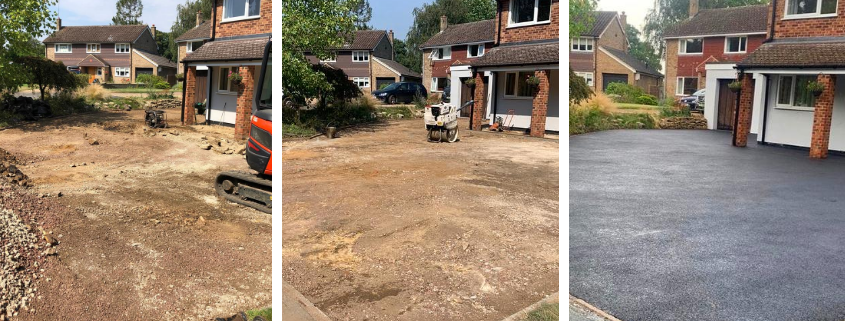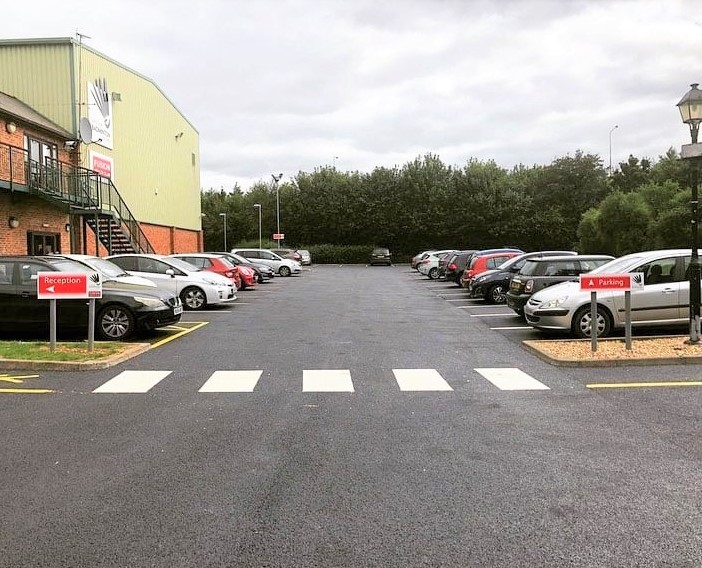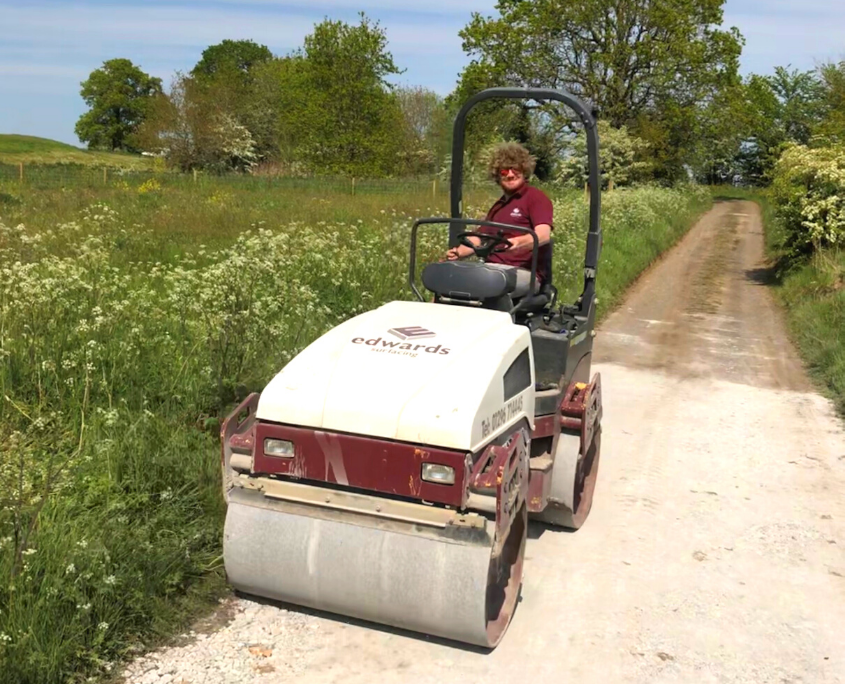FAQ Blog
New Driveway – Overlay or Full Construction?
One of the most common questions when we meet a potential client at their property, or a commercial client looking to revamp their car park, is “do you need to dig it all out” or “can you just got over the top”. The answer is always a case by case answer, and to give you a better idea of why we would chose to approach your project the way that we do, we’ve put together this blog. Let’s start at the bottom.
The Sub Base
When we look at your new driveway we obviously can’t see what’s underneath, but this is probably the most important consideration when assessing whether to overlay the area or create a full depth construction. The sub base can fail due to a number of reasons:
- The first culprit could be poor Installation where the sub base material, usually what is known as a “MOT Type 1” crushed rock aggregate, is too thin, has not been compacted properly, or has been laid to incorrect levels.
- There are also instances where the ground around or under the sub base has moved due to problems such as water flowing through the sub base, tree roots growing through the sub base, or other similar ground movements.
- Another reason for a failed sub base can be driveway sinkage which can occur on new homes or where a driveway has been laid for the first time. This is because the land that the driveway has been built on has not been given enough time to settle before building took place.
We can usually see signs of a failed sub base when we assess the area, such as obvious large cracks or sunken areas, and we make sure that we ask questions and pay close attention to the tell-tale signs when we visit your home. In the case of a failed sub base the only option is to remove the asphalt / tarmac surface courses and the sub base and start from square one, making sure we install a sufficient sub base for the area.
Binder Course
With regards to most driveways and car parks, this is the first of two layers of tarmac / asphalt. Again, this is usually hidden from our view, but where we decide to replace this layer as well as the surface course there will be cracks or fretting of the surface course suggesting that we should replace both layers. It may also be the case that when we try to remove the surface course only, this binder course won’t separate and so both layers come out. In this case we would replace both layers.
It is important to then assess the sub base and grade the area, adjusting levels by adding or removing sub base material where required.
You can see an example of a driveway where we have removed the surfacing down to the sub base below.
Surface Course Overlay
If we can see that the area is solid and sound, and that there has been little or no movement over the course of years, we would opt to overlay the parking area. Of course adding a new layer, usually 25mm – 30mm thick Stone Mastic Asphalt (SMA), on top of the existing would raise the level of the area. Therefore, we make sure we remove enough of the existing surface course at edgings, garage entrances, and manholes or service boxes to allow for a neat tie-in to the existing. This way you won’t see or feel any variation in levels. We would they apply a “tack coat” to increase adhesion of the new surface course and overlay with new surfacing, making an old drive good as new with little disruption.
You can see an example of a driveway overlay below.
Choosing to either dig out the whole drive or car park and start again or overlay the existing area comes down to what is required to give you a long lasting surface. Obviously, a whole drive replacement is more costly than an overlay, and even if the client wants a whole drive replacement, this isn’t always better than an overlay. By removing a strong solid driveway that has been there for years, or reducing the existing layers you could potentially be weakening the area, so when this is suggested, please don’t think we’re cutting corners! Our goal is to give you the most long lasting and best product possible.
Mark Edwards
Surveyor, Edwards Surfacing













Leave a Reply
Want to join the discussion?Feel free to contribute!